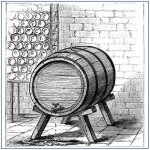Trademarks and their Function in the Fashion Industry
A trademark is any kind of signifier a company uses to distinguish its good, or services, from other companies. This includes words, symbols, smells, trade dress, which includes the design of a product or its packaging.
For use in commerce, a trademark must be attached to particular goods or services. A trademark must be used in direct connection with goods or services, in commerce. Rights are granted to the first party to use the mark in commerce.
What Is A Trademark and Its Function
From the CLE class: Fashion Law Basics: The Lawyer Wears Prada
Maria Vathis has a broad range of experience defending corporate clients in complex business litigation matters, insurance coverage, and class actions involving alleged violations of federal statutes, including the Telephone Consumer Protection Act. Ms. Vathis has represented financial institutions, investment firms, law firms, brokers, attorneys and other professionals. She handles matters nationwide in federal and state courts.
Patrick McKey
has a practice that concentrates primarily on complex commercial litigation and international business disputes, as well as corporate counseling. For over 10 years, he has represented a range of clients in the fashion industry, including Bruno Magli, Coach, Dana Davis, Giuseppe Zanotti, Harajuku Lovers, Italian Ready to Wear (“IRTW”), Kid Robot, L.A.M.B., Oilily and Vicini. He has represented many of these clients in all aspects of their operations, from intellectual property and licensing issues to commercial litigation, contract negotiations, and import/export issues.In this CLE class clip, Patrick and Maria discusses trademarks and their function in the fashion industry.
Watch the Full Fashion Law Basics: The Lawyer Wears Prada CLE Class
Trademarks have many functions, it becomes the source identifier, which enables a consumer to figure out who made a good, or if a product comes from a particular manufacturer. The same mark may be used by different companies, if used on such different products, or services, or marketed to different consumers such that there would be “no likelihood of confusion” as to what the source of the product or service is.
For example, BOSS is trademarked for jewelry, services, clothing, and bags, by owner Hugo Boss Trade. BOSS is also trademarked by the BOSS Sheperd’s LLC for catering, and restaurant services. In this example, trademarks are in different markets and “no likelihood of confusion” in the product lines exist.
For more information on trademarks and their function in the fashion industry, check out the complete CLE class video, presented by Maria Vathis and Patrick McKey.








